Spoilt for choice
Not all C18 columns show the same separation behavior
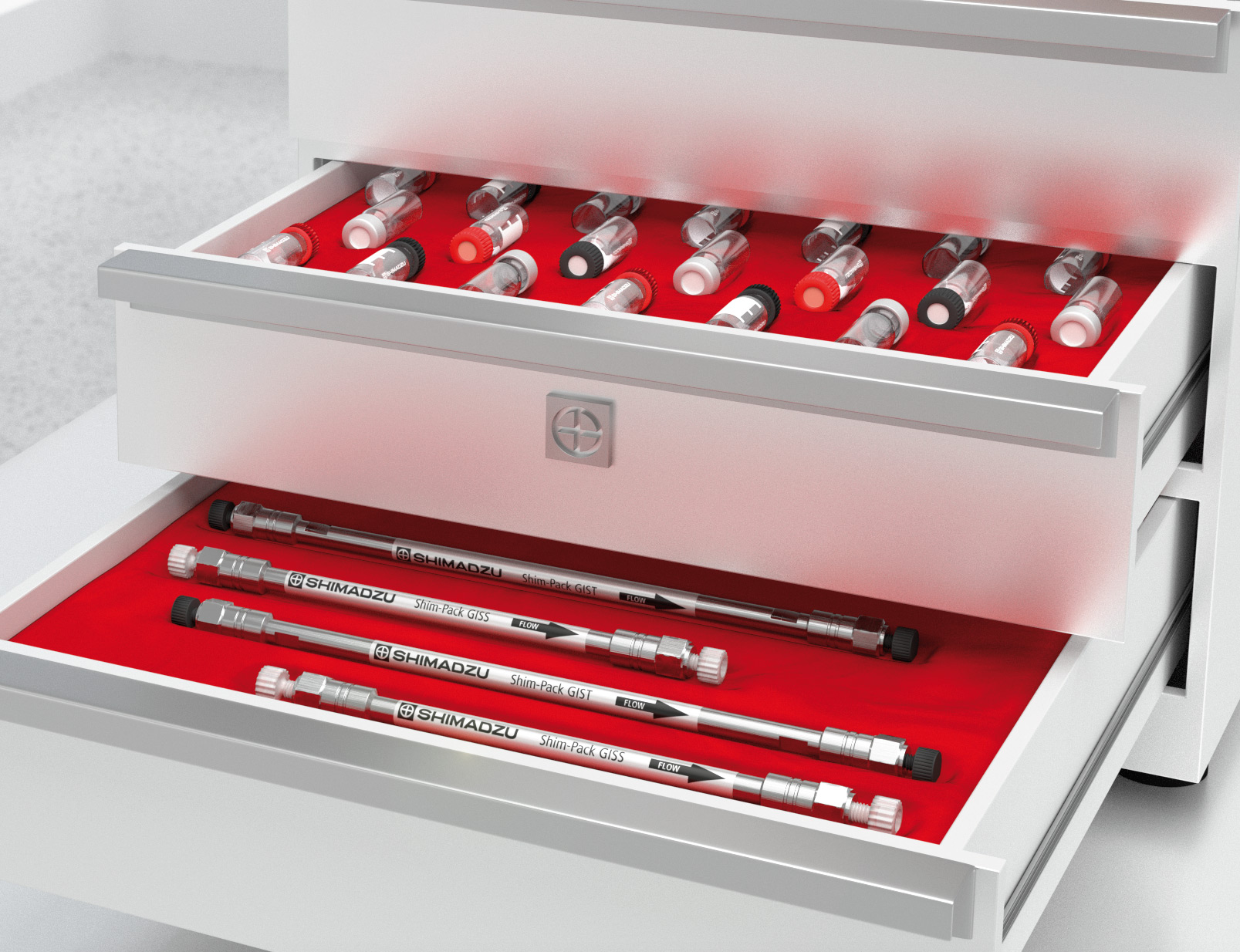 Shim-pack LC columns from Shimadzu
Shim-pack LC columns from Shimadzu
A wide range of different li-quid chromatography columns available, with many stationary phases to choose from. Even if the stationary phase used is clearly defined, there can be many differences. This article refers only to silica gel based stationary phases with C18 modification, also called octadecyl silanes or ODS columns, which are the general standard for reversed phase chromatography. To illustrate the problem with an example, figure 1 shows two chromatograms of different Shim-pack C18 columns.
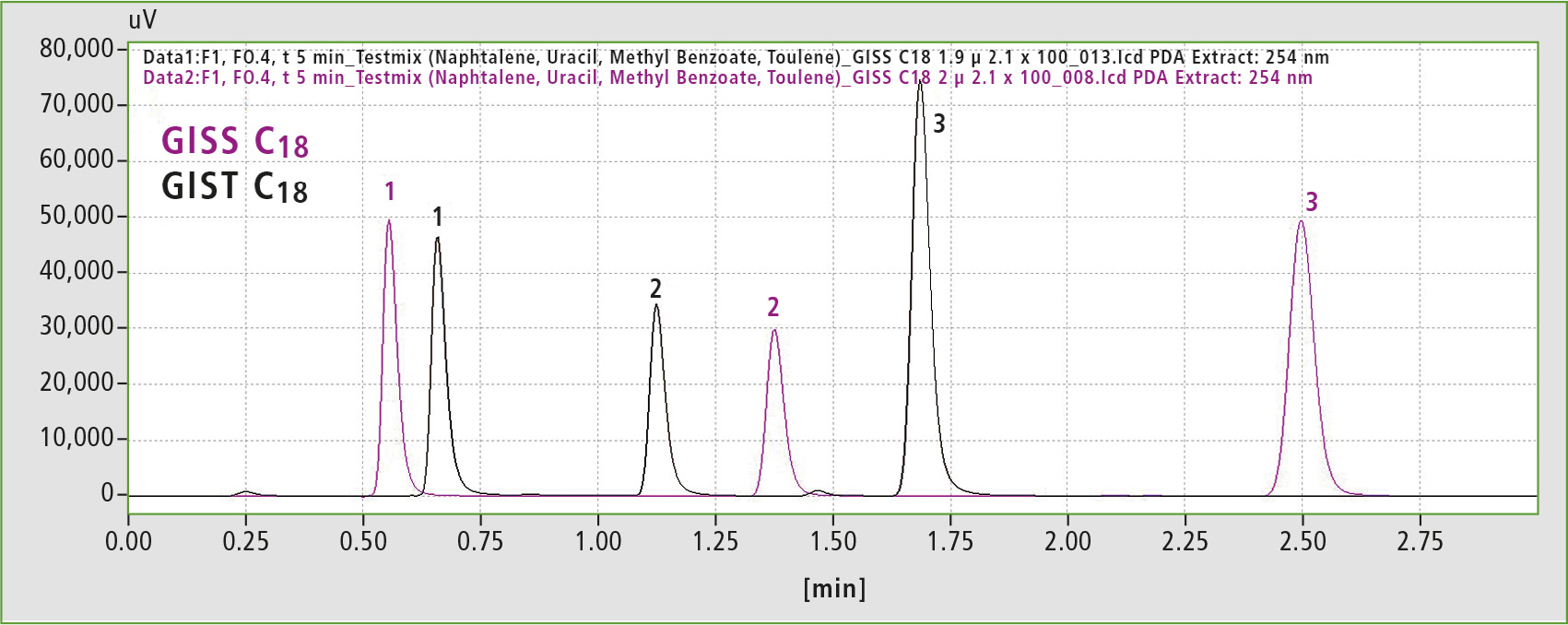 Figure 1: Comparison of two different stationary phases packed with C18 modified silica gel (GISS and GIST). Dimensions: 2.0 x 100 mm, 2 µm particle size; mobile phase: 35 % water, 65 % acetonitriles. Samples: 1) uracil, 2) methyl benzoate, 3) naphthalene.
Figure 1: Comparison of two different stationary phases packed with C18 modified silica gel (GISS and GIST). Dimensions: 2.0 x 100 mm, 2 µm particle size; mobile phase: 35 % water, 65 % acetonitriles. Samples: 1) uracil, 2) methyl benzoate, 3) naphthalene.
Sample, method used, and column dimensions are identical. So, from a purely chemical point of view the separation principle is the same, but the retention times are nevertheless very different. Peak 3 (naphthalene) shows a retention time of 1.68 minutes on GISS C18 while with GIST C18, it elutes after 2.50 minutes.
The difficulty of selecting a suitable C18 column is great, because various columns can behave differently. This depends on the type of silica gel and its production as well as on the modification and packing technique of the column.
Support for comparing and characterizing of C18 columns
Due to the huge selection of columns, it is important to compare the chemical and physical properties and differences of the various stationary phases in order to characterize the selectivity. Different approaches exist, as published by Engelhardt, McCalley or Tanaka [1, 2, 3]. The latter will be discussed below.
The Tanaka test provides characteristic values that can be used to assess the separation behaviour of a column more precisely. They are calculated under standardized conditions from the retention times of suitable analytes. It is therefore possible to compare stationary phases accordingly and to make an informed choice more easily. Since the methods and all other parameters are prescribed for the Tanaka test, comparable values can be obtained – even if the measurements are carried out in different laboratories. The Tanaka test is therefore a useful tool for comparing different columns.
Parameters of the Tanaka test
The test describes various column characteristics including capacity, hydrophobicity, steric selectivity and silanol interactions. These parameters (table 1) are determined using the retention times of suitable standard substances measured under specified analytical conditions.
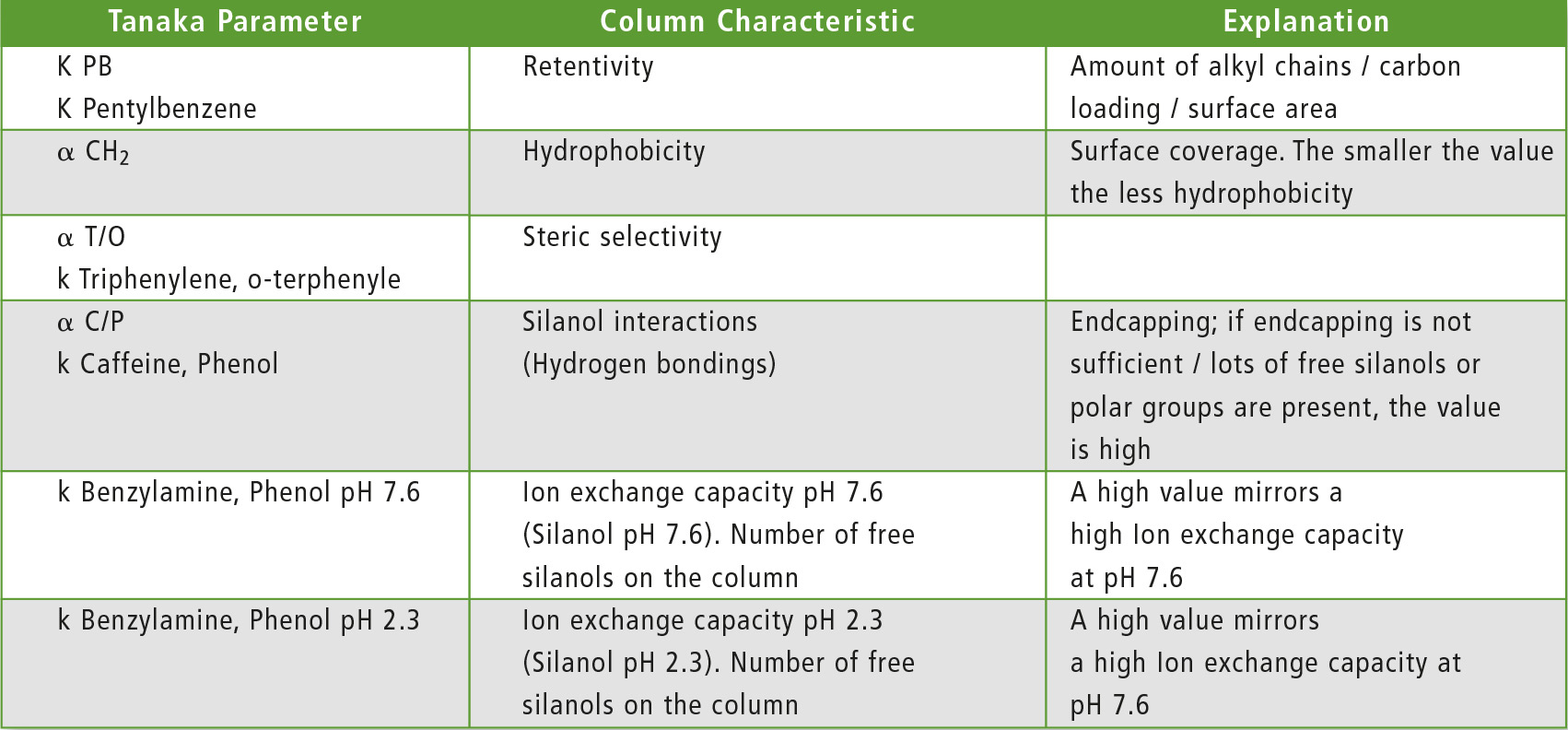 Table 1: Listing and explanation of the individual Tanaka parameters
Table 1: Listing and explanation of the individual Tanaka parameters
Results from many columns based on the Tanaka test are helpful in finding out which columns are shortlisted. The freely accessible “Column Selector” from ACD/ Labs contains Tanaka values of many columns for comparison [4]. However, other parameters and specifications that are important for selection of a suitable separation column for a particular application are also described and explained below.
Important specifications and parameters for column selection
To select a suitable stationary phase for a separation problem, the column parameters and specifications given in table 2 are very helpful. Unlike the Tanaka test, these values come from the column manufacturer and are directly accessible.
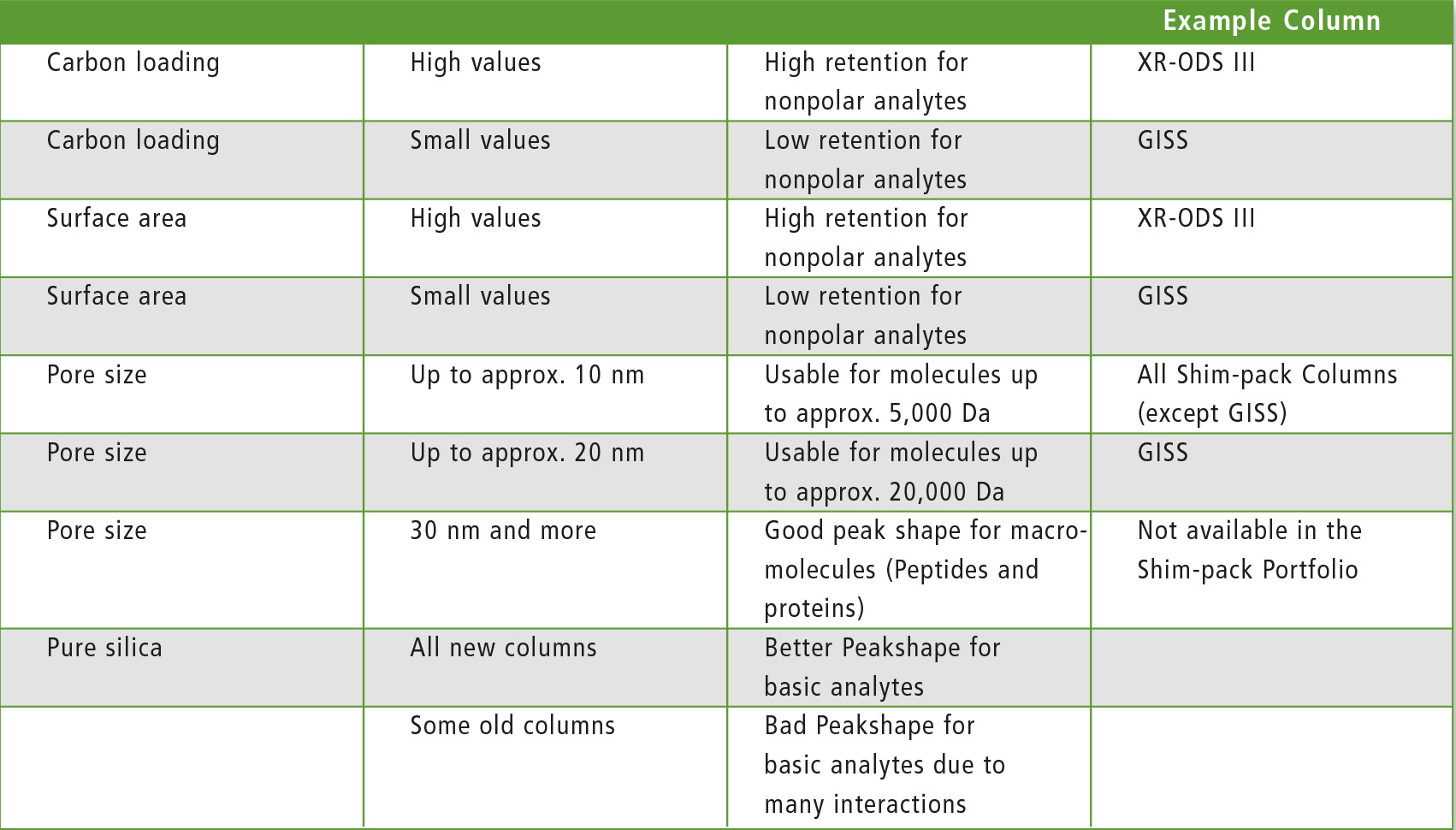 Table 2: Listing of relevant column specifications with their effect on separation and a column example from the Shim-pack range
Table 2: Listing of relevant column specifications with their effect on separation and a column example from the Shim-pack range
Column efficiency is also important. This is measured in theoretical plates (N). The higher the number of plates, the narrower the peak and/or the more it retains on the column.

L = length of column
H = plate height
tR = retention time
Wh = peak width at half height
A narrow peak and thus a higher plate number, is achieved by a small particle size, a small particle size distribution and a good packing procedure. A high N value therefore reflects a good packing quality of the column.
A second factor is the quality of the silica gel. Nowadays this point is negligible as all modern columns contain high-quality silica gel. In the past, high particle size distribution, poorly packed column beds and a high proportion of acidic silanol groups resulted in a broad peak shape, not only for basic analytes.
In addition to these general specifications, other modifications also influence the retention behavior of various C18 columns. These are described below with the example of the columns used for this article.
Columns used
The following Shim-pack C18 columns were used for this study: XR-ODS III and MAqC-ODS, and from Shim-pack G series GIST C18, GIST C18-AQ, GISS C18, GIS RP-Shield and GIS C18-P. The Shim-pack G series offers a complete portfolio with many different dimensions. This benefits the development of separation methods for phases with very small dimensions (UHPLC) and can be scaled up to very large columns for preparative applications.
XR-ODS III belongs to the XR Series; it is packed exclusively with small particle sizes. This makes it well suited for high-pressure applications with high resolution and sensitivity.
MAqC-ODS is a C18 column containing additional metal. Due to the metal content, the column gives cation exchange effects, retarding basic substances more strongly. The column is very well suited to analysis of water-soluble vitamins and basic components.
The GIST C18 column shows superior inertness. Even ionic components can be measured with symmetrical peaks and high reproducibility.
Compared to conventional C18 columns, the GIST C18-AQ column shows very strong retention to hydrophilic polar analytes. It can also be used in 100 % aqueous mobile phase without loss of retention.
The GISS C18 column has the same inertness and stability range as the GIST C18. It is used for fast separations and is ideal for LC-MS applications. With 20 nm, the GISS has the largest pore size in the Shim-pack range and is therefore the ideal choice for larger analytes with molecular weights up to 20,000 Da.
The GIS RP-Shield column has a polar functional group embedded between the silica surface and the C18 groups. This makes it stable even under 100 % aqueous conditions. The polar functional group is base deactivated, so acidic analytes in particular show good peak form. This results in a weak interaction to basic analytes and a strong interaction to acidic analytes. The additional interaction of hydrogen bonds gives the column a different selectivity compared to other C18 columns.
In the GIS C18-P column, the C18 modification is polymerically bonded instead of monomeric as in most other ODS phases. This way, it offers high steric selectivity for separation of planar and non-planar analytes. Ideal applications are, for example, the separation of PAHs or analysis of structure-like components (vitamins D2 and D3).
Measurement Parameters and Methods
Instrument: LC-2040C 3D (Shimadzu)
Column: Shim-pack XR-ODS III (75 mm x 2.0 mm I.D., 1.6 µm)
All other Shim-pack C18 (150 mm x 4.6 mm I.D., 5 µm) Shimadzu
Mobile phase:
A: 20 % water, 80 % methanol
B: 30 % water, 70 % methanol
C: 60 % water, 30 % methanol, 10 % 200 mM KH2PO4; pH 2.7
D: 60 % water, 30 % methanol, 10 % 200 mM KH2PO4; pH 7.6
Oven temperature: 40 °C
Flow rate and injection volume are adapted to the column dimensions.
Results
The Tanaka test results show interesting differences between the various C18 columns in the Shim-pack range. The most divergent values are compared in figure 2 (see also table 1).
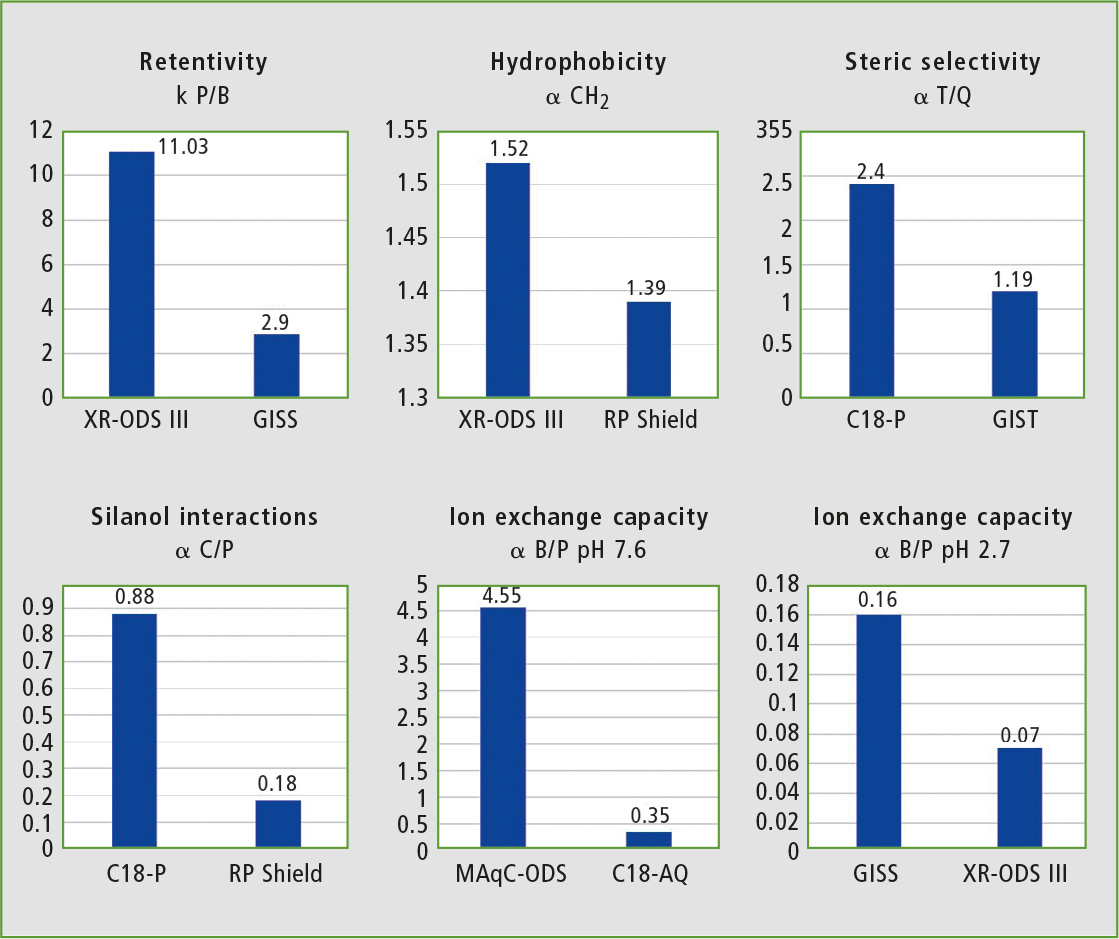 Figure 2: Display of the lowest and highest Tanaka parameters from the complete Shim-pack C18 range
Figure 2: Display of the lowest and highest Tanaka parameters from the complete Shim-pack C18 range
The k P/B value shows retention capacity of the column for non-polar substances. Columns providing low retention times for amylbenzene have small values. For quick analyses, the GISS column can be used; if a column with high retention is required, the XR-ODS III is a good choice.
The CH2 parameter highlights hydrophobicity and selectivity for substances of a homologous series which, like the test substances, differ only by the number of C chain links. Here, too, the hydrophobic XR-ODS III phase shows a high value. The RP-Shield, however, with the embedded polar group has significantly less retention and selectivity for the nonpolar test substances, and the a-value obtained for CH2 is much lower.
The next parameter, a T/O, illustrates the column’s ability to separate planar and non-planar molecules (steric selectivity). The C18-P column is very good for separating structure-like analytes differing only in their spatial arrangement.
Silanol interactions, i.e. the ability of the column to form hydrogen bonds, are described by the a C/P value. This also evaluates the quality of end capping. This value should be taken with caution, as here the RP-Shield shows a very low value even though it contains a polar group. However, this embedded functionality has the opposite polarity of the silanol groups – hence the reduced a C/P value.
The last two parameters reflect the ion exchange capacity of the column at pH 7.6 and pH 2.3, i.e. in a mobile phase with pH above and below the pKa of the silanol groups, in which ionization to O– is promoted once (pH 7.6) and suppressed once (pH 2.3). Here, the MAqC-ODS also shows cation exchange effects at pH 7.6 because it contains clearly acidic groups thanks to the metal.
Conclusion
Selecting a suitable C18 LC column is a challenging task. There are many different C18 types available, and some of these differ highly in their separation properties. Classification according to the parameters of the Tanaka test protocol can help to make the right choice.
Literature
[1] K. Kimata, K. Iwaguchi, S. Onishi, K. Jinno, R. Eksteen, K. Hosoya, M. Araki, N. Tanaka, J. Chromatogr. Sci. 27 (1989), 721.
[2] H. Engelhardt, H. Low, W. Gotzinger, J. Chromatogr. A 544 (1991) 371.
[3] D. V. McCalley, J. Chromatogr. A 636 (1993) 213.
[4] Software Column Selector